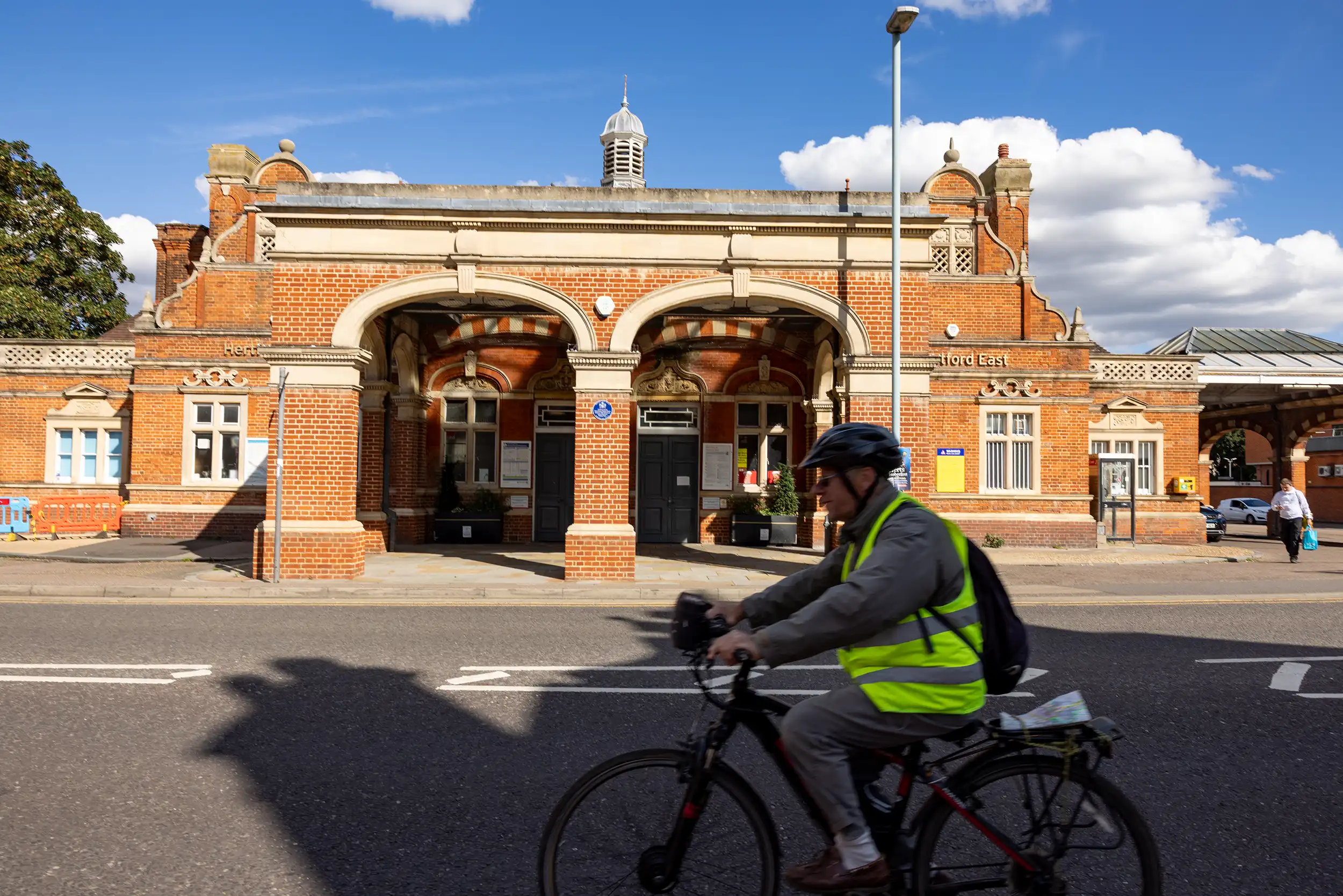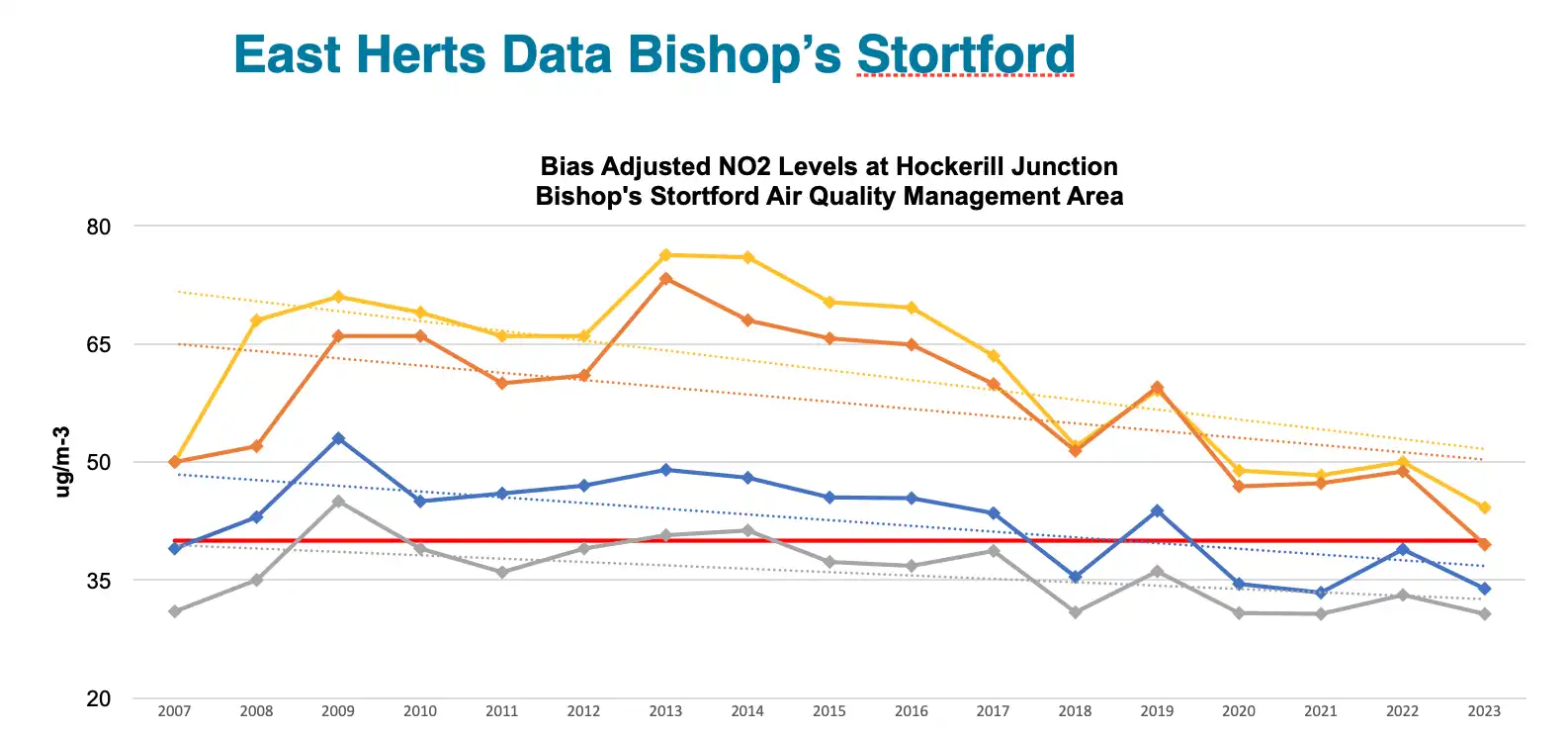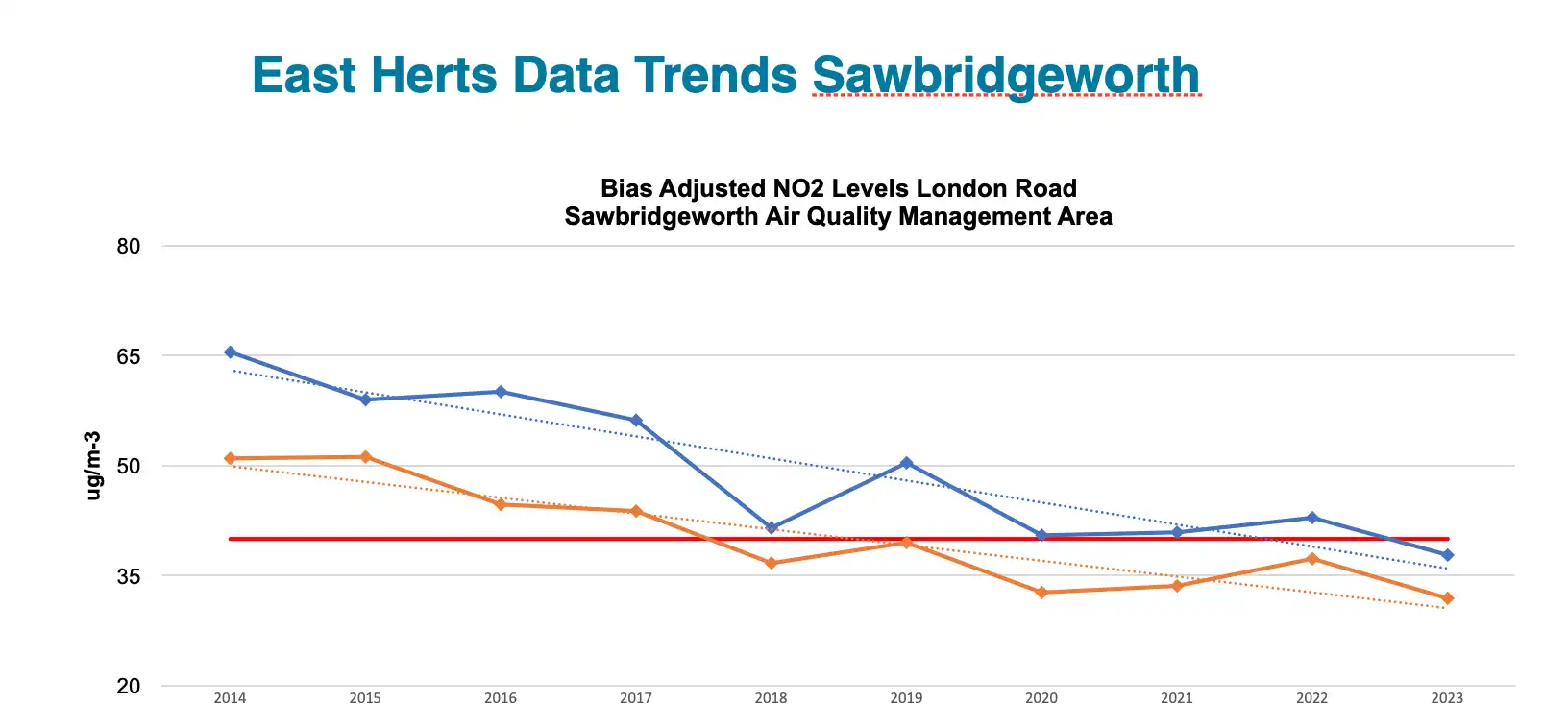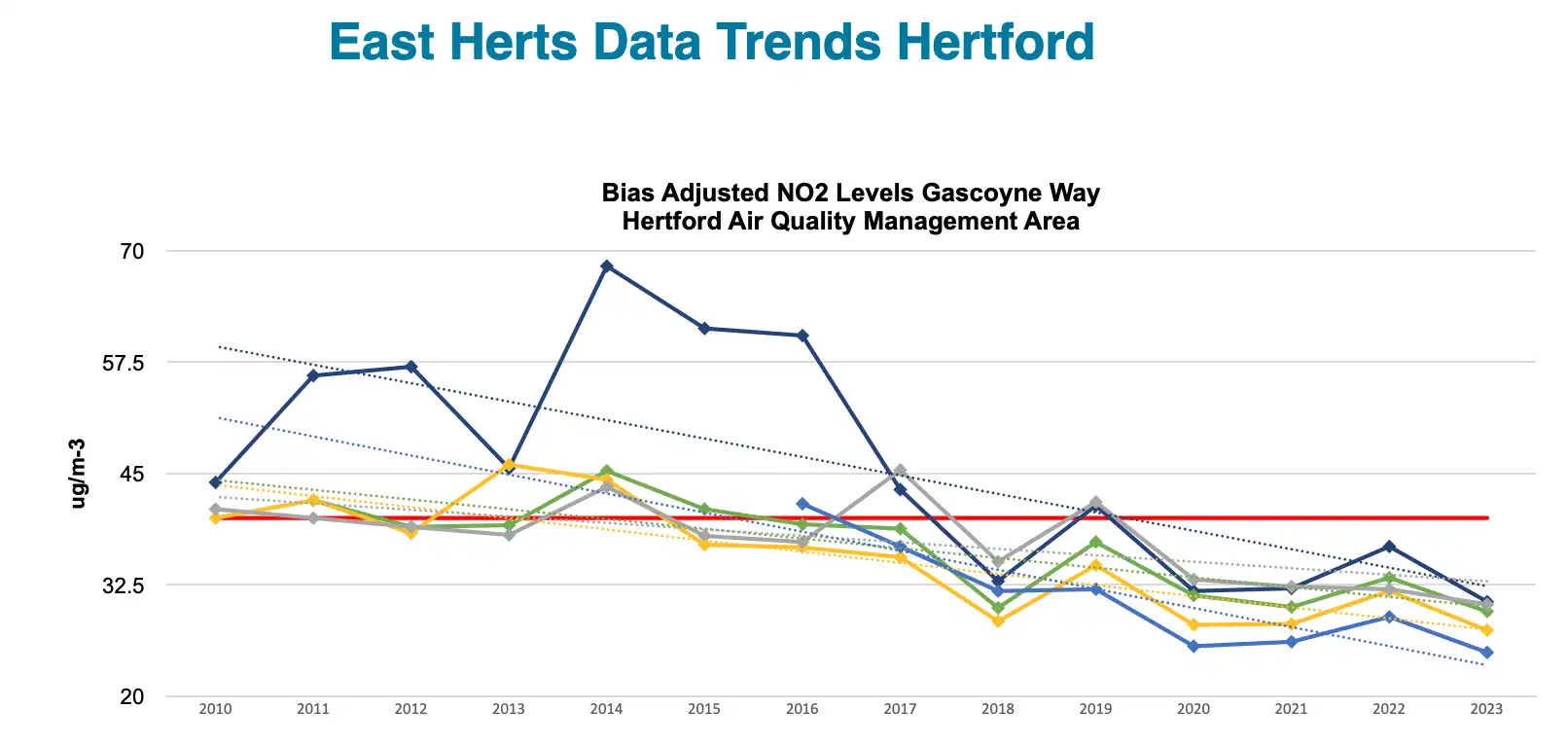Air Quality in the District
East Herts Council regularly reviews the air quality within our District. East Herts is the most rural district in the County, with a great deal of natural and built heritage in its combination of villages and market towns.

Whilst air quality has improved significantly in recent decades, there are some areas where local action is needed to protect people an the environment from the effects of air pollution.
The council's responsibilities relating to air quality management come from legislation laid out in the UK Air Quality Strategy. Any area within East Herts not meeting National Air Quality Standards is declared as an Air Quality Monitoring Area (AQMA).
There are three AQMAs in East Herts: Bishop’s Stortford, Sawbridgeworth and Hertford. The three AQMAs in East Herts have a combination of traffic congestion and road layout that has led to Nitrogen Dioxide (NO2) concentrations being above the UK annual mean air quality objective (40 µg/m3 - micrograms per cubic meter).



What these graphs show
These graphs show that air pollution in the three towns has been declining over time, with upticks following fleet dieselisation, and a dip in 2020 when road traffic was greatly reduced during the COVID-19 pandemic.
It should be noted that the World Health Organisation (WHO) Global Air Quality Guidelines recommend an annual mean concentration of 10 µg/m³ (micrograms per cubic meter), much lower than in the UK.
Improving Air Quality
Where an AQMA is declared, action needs to be taken to reduce pollution levels. An action plan must also be produced to tackle the problem.
Research commissioned by East Herts District Council in 2024 found that there is appetite to improve air quality in the district, including appetite among parents to increase use of Park and Stride, appetite amongst school children to increase active travel and walking to school, and appetite amongst teachers to increase use of car sharing.
Barriers to making change include:
- Lack of cycle confidence
- Road safety concerns
- Infrequent / unreliable buses and trains
- High costs of public transport
- Lack of sustainable travel infrastructure for new housing developments
- Additional time required for active travel vs. car travel
Get air quality alerts direct to your phone
Visit the Hertfordshire and Bedfordshire Air Pollution Alert System to receive air quality alerts straight to your mobile phone.
This free service will be of particular benefit to people with medical conditions that may be affected by pollution, such as asthma, bronchitis and emphysema.